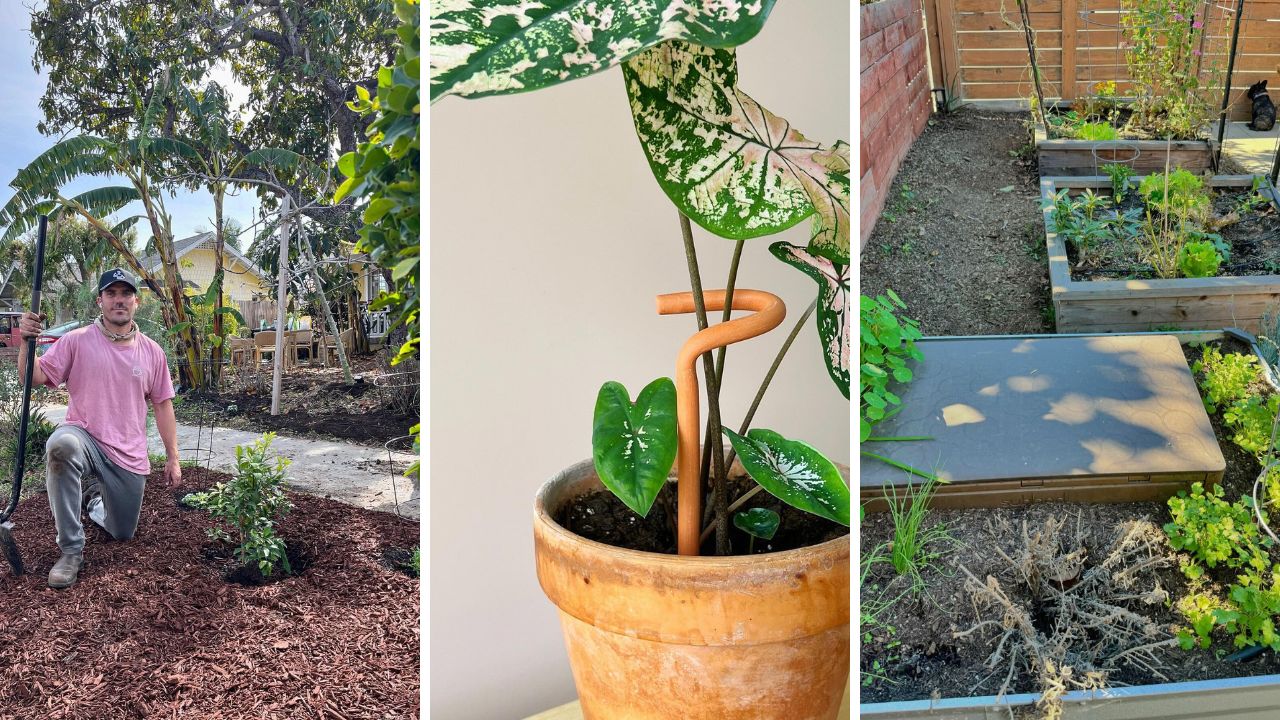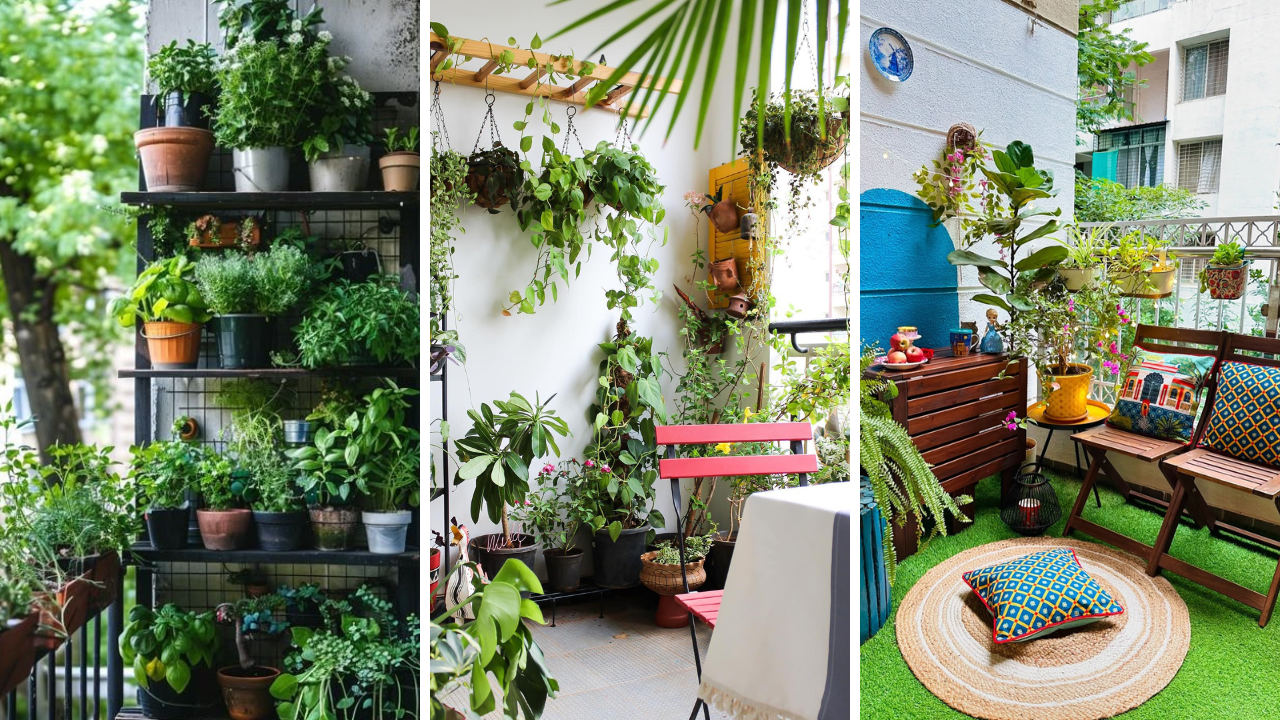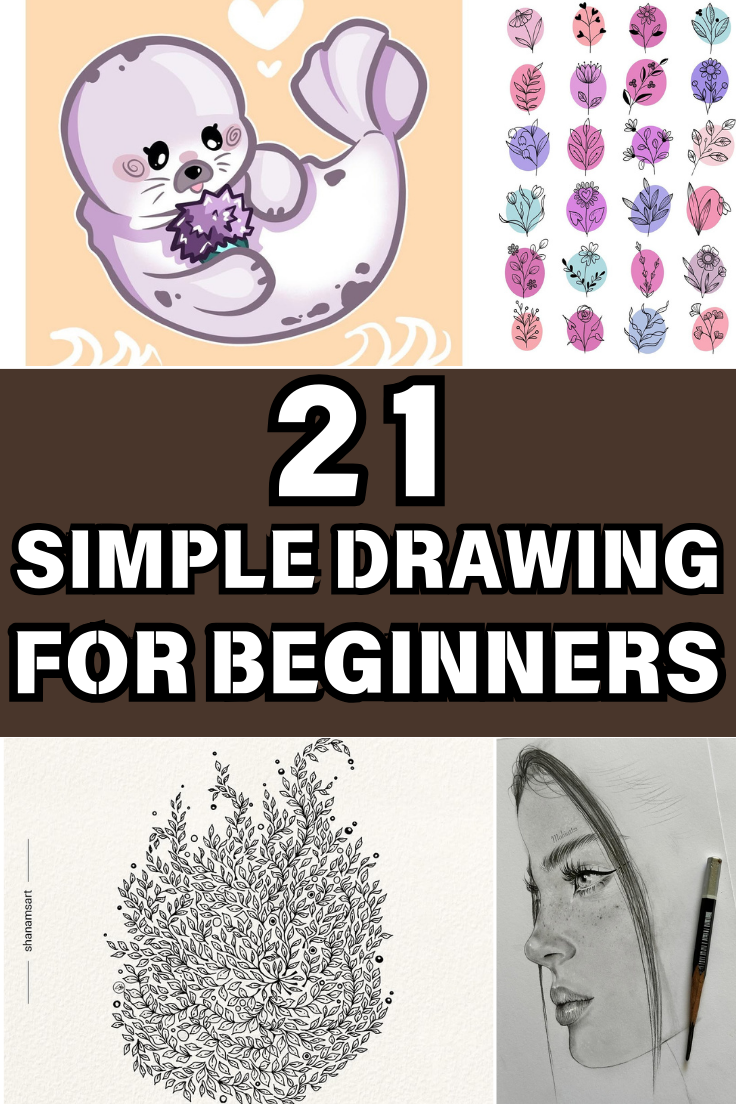
Art is a journey that starts with just a pencil and a blank page, and the possibilities are endless. For many beginners, the idea of drawing can feel intimidating, but it doesn’t have to be that way. By starting with simple, manageable ideas, anyone can build the skills to create stunning artwork. This blog post will take you through 21 simple drawings that are perfect for beginners. These drawing ideas are designed to be easy to follow and will help you develop your skills while producing artwork that will impress friends, family, and even yourself. Whether you’re looking for something calming like a mandala or a fun doodle like a cartoon animal, these simple drawing ideas will boost your creativity and bring out the artist in you. We’ve also included helpful tips and product recommendations from Amazon to ensure you have everything you need to start sketching today. Let’s dive in and explore these 21 simple yet mind-blowing drawing ideas that will inspire you to start creating right away.
1. Basic Flower Doodle
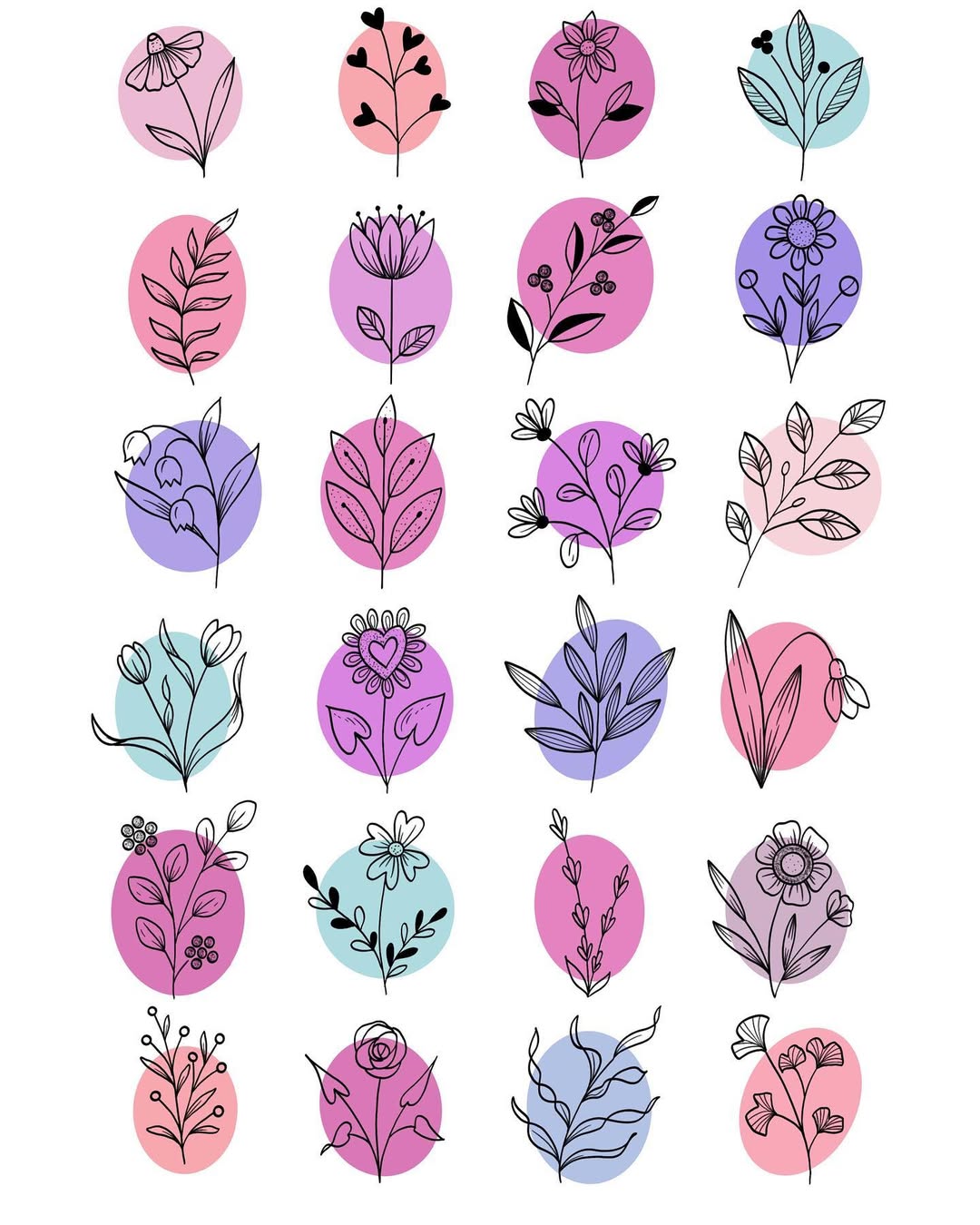
source @linebotanical
Flowers are often a beginner’s first drawing because they are simple and can be made uniquely personal. Begin by drawing the basic outline of a flower, focusing on the petals and symmetry. You can start with a daisy or a tulip, shapes that are both simple and easily recognizable. Once you’ve mastered basic flowers, experiment with adding intricate details like leaves, stems, and additional layers of petals. This exercise helps you understand proportions and the art of repetition, and you can take it a step further by blending colors for added depth. Flowers are timeless and versatile, making them the perfect subject for beginners.
2. Simple Geometric Shapes
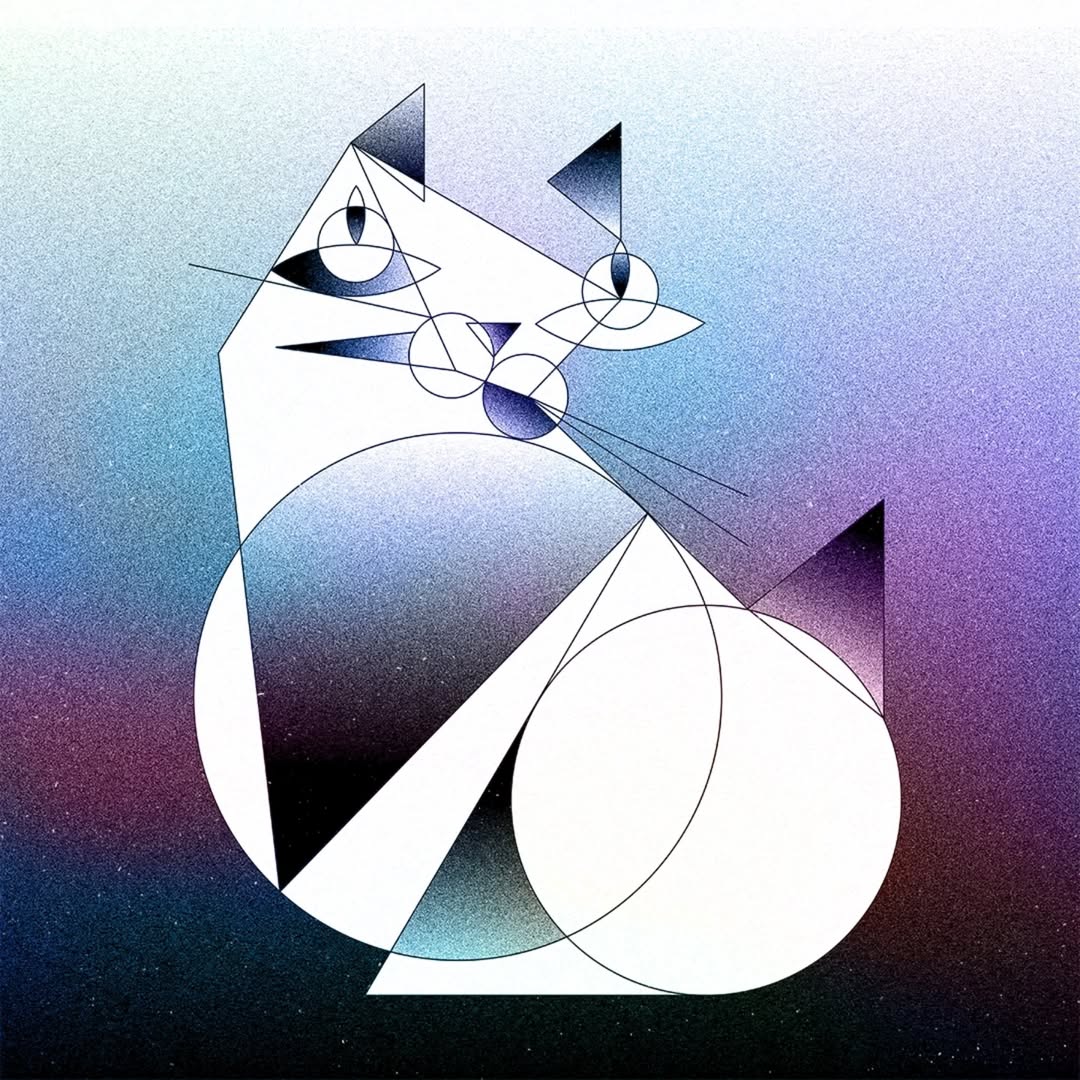
source @purr_up
Geometric shapes are the foundation of many complex designs and an essential skill for any beginner artist. Start with basic shapes like circles, squares, triangles, and rectangles. These shapes teach you symmetry and proportion and serve as the building blocks for more complicated drawings. Practice drawing these shapes in different sizes and angles, then move on to combining them to form patterns or more complex designs, like a cube or pyramid. By mastering simple geometric shapes, you’ll strengthen your drawing skills and prepare yourself for more challenging tasks later on.
3. Cute Cartoon Animal

source @galaxyqueenmaddy
Drawing cartoon animals is a fun and creative way to develop your drawing technique. Begin with simple animals like a cat, dog, or bunny, focusing on the basic structure of their heads, bodies, and features. Cartoon characters don’t need to be realistic, so you can exaggerate their features to make them even more adorable. Experiment with different expressions, body postures, and accessories like hats or bows to give them personality. This type of drawing allows you to learn about character design and the importance of details, all while having fun with your creations.
4. Abstract Line Art
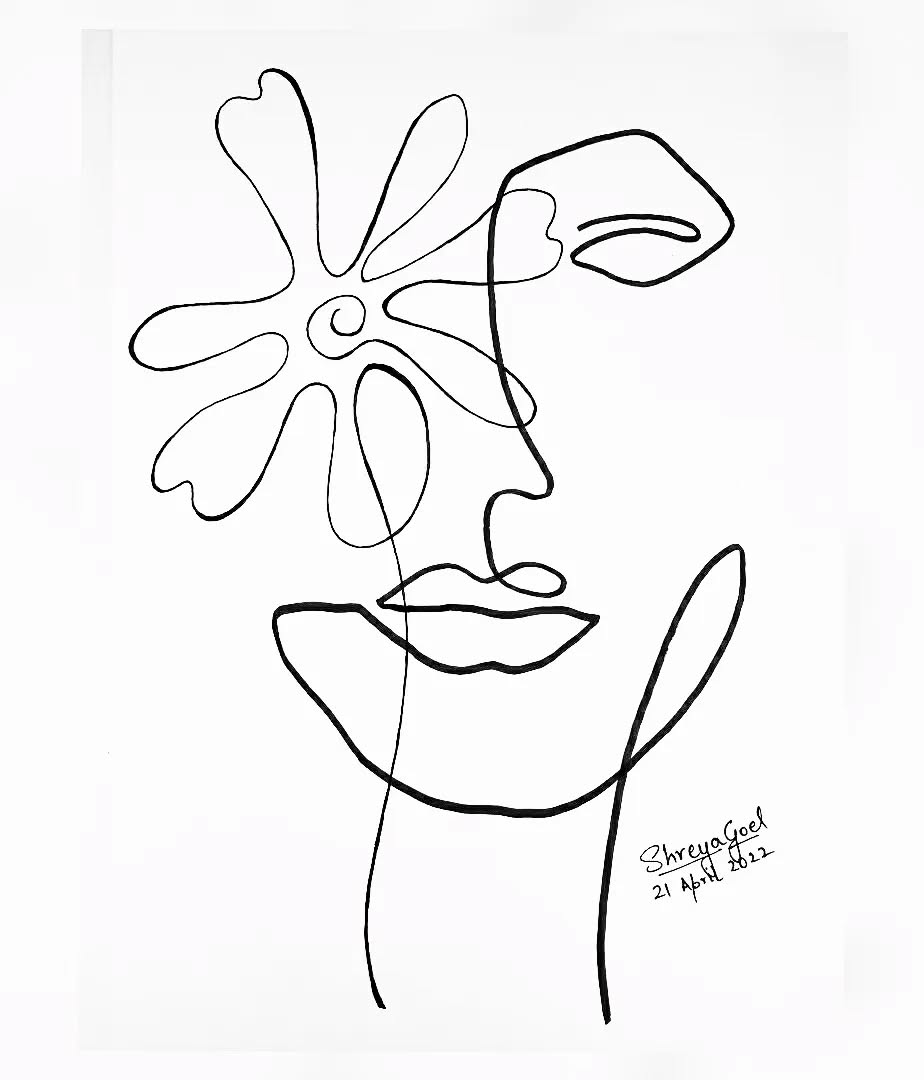
source @_from_scribble_to_sketch_
Abstract line art can seem intimidating, but it’s actually a perfect entry point for beginners who want to explore creativity with minimal tools. This style uses continuous, flowing lines to create shapes, figures, or even faces. The simplicity of line art lets you focus on creativity and form, allowing you to experiment with free-flowing designs. Try drawing random lines that cross each other, then connect them to form abstract shapes or patterns. Don’t worry about perfection—this form of art is all about expressing yourself freely and enjoying the process.
5. Sunset Scene

source @karmakar2254
A sunset scene is a wonderful way to practice blending colors and creating depth in your drawing. Start with a simple horizon line and draw the sun in the background, then add layers of clouds and other elements like trees, water, or hills. The challenge is in capturing the vibrant hues and subtle gradients that make a sunset so captivating. Try using colored pencils or markers to blend colors smoothly, and experiment with shading to add dimension. This project will teach you about light, contrast, and color theory while allowing you to create a serene and beautiful piece of artwork.
6. Leaf Patterns
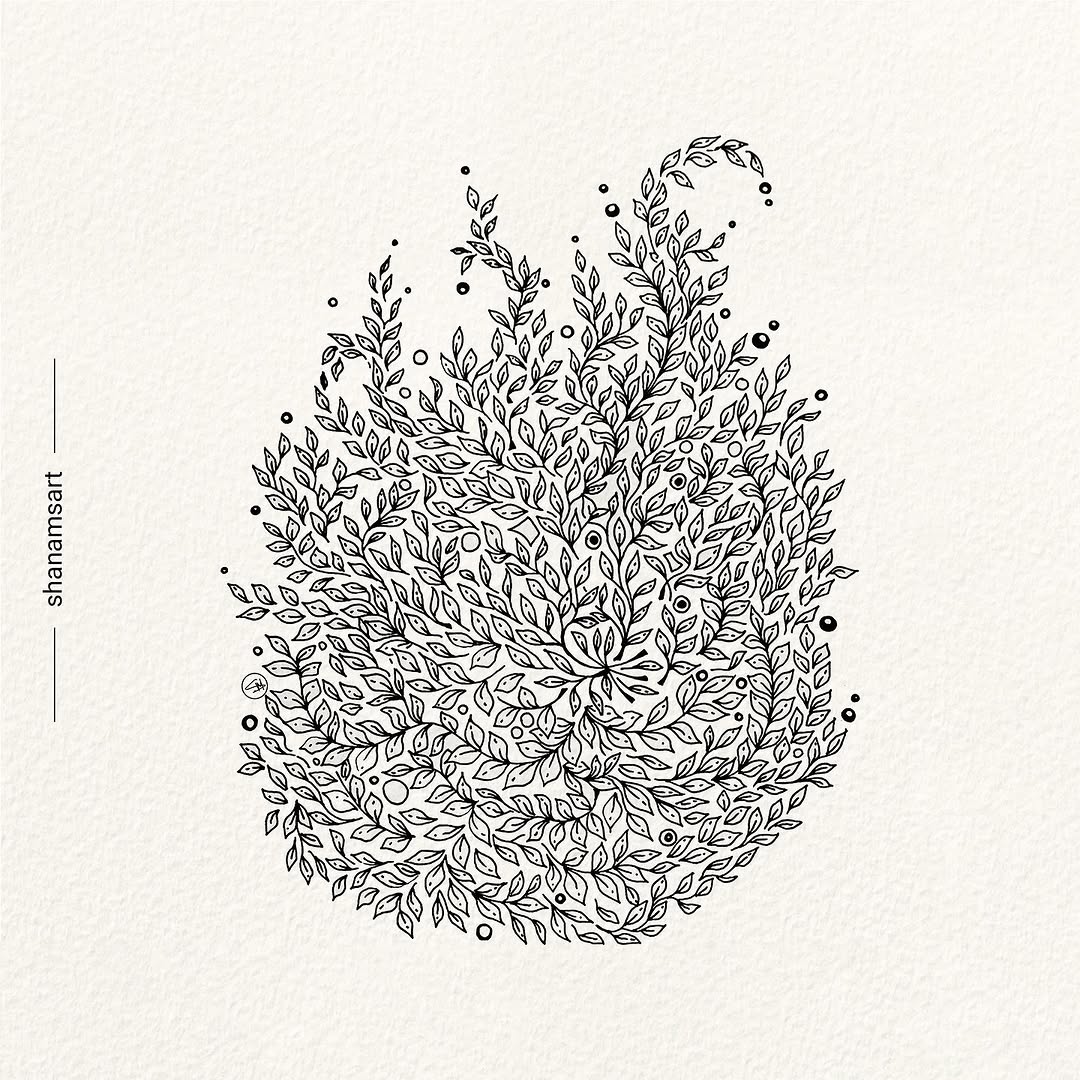
source @shanamsart
Drawing leaves allows you to practice your attention to detail, symmetry, and texture. Start by sketching basic leaf shapes such as those of oak or maple, then focus on adding veins and other details that bring the leaves to life. You can even create patterns by repeating different leaf shapes in rows or layering them for a dense, textured look. Leaves can also be used in combination with other nature-inspired elements like branches or flowers, and as you practice, you’ll get better at adding intricate details that make your drawings more realistic.
7. Basic Portrait Sketch
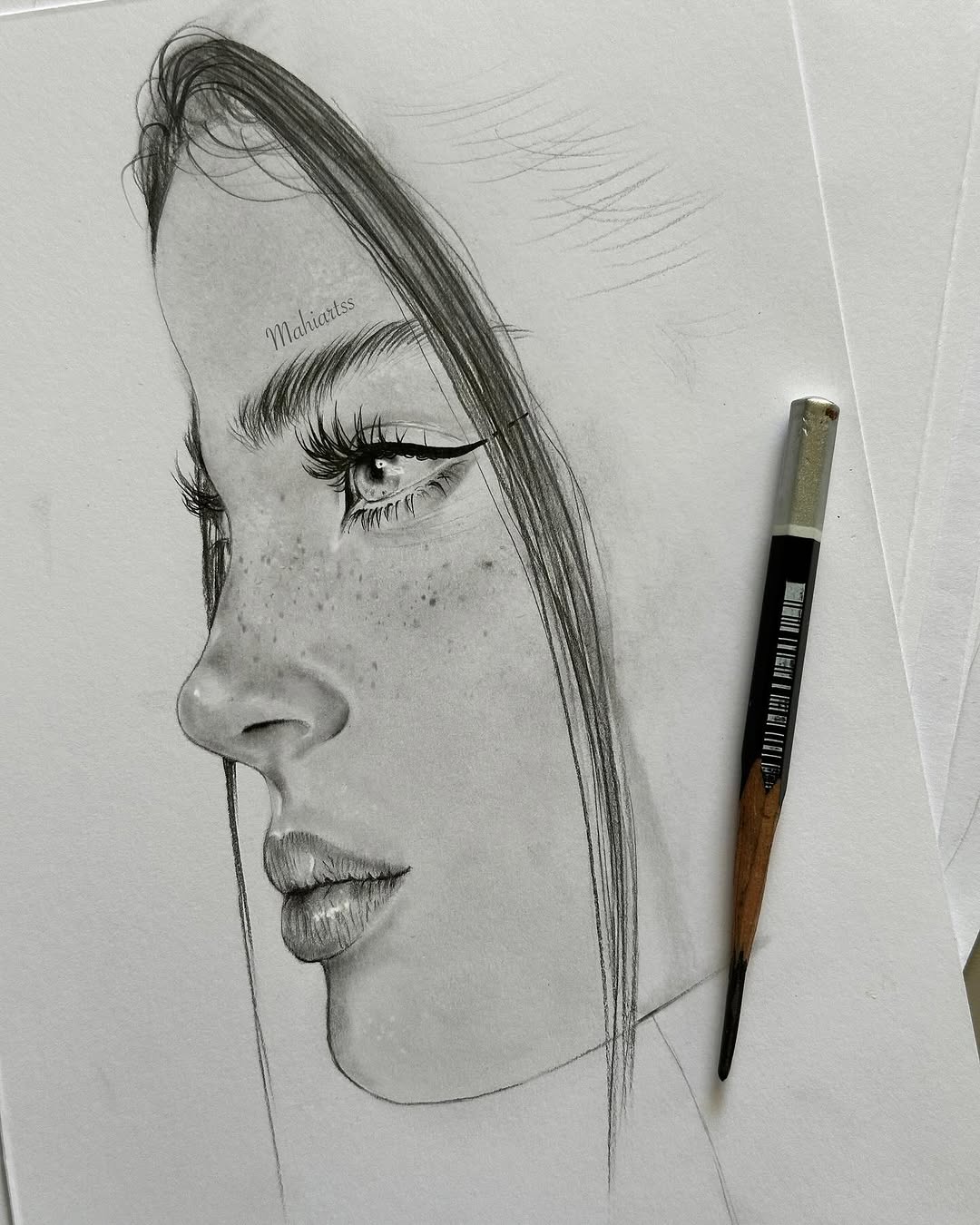
source @mahiartss
Portraiture is an exciting challenge for any artist, and even beginners can start learning the basics with a simple face sketch. Begin by breaking down the face into basic shapes, like an oval for the head and lines for the eyes, nose, and mouth. Start with a simple frontal or profile view of the face and practice drawing the main features—eyes, nose, and lips—without worrying about intricate details. As you become more comfortable, you can start adding shading to give the face more dimension. This is a great exercise in proportions and realism, and it will also help you understand how facial features fit together.
8. Silhouette Art
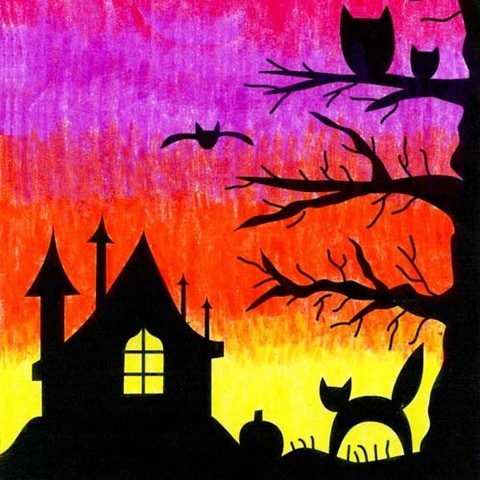
source @artprojectsforkids
Silhouette art is one of the most beginner-friendly techniques you can try. It focuses on the shape of the subject, rather than on details, which makes it a great exercise for focusing on form and shadow. Start by drawing simple figures—like a person, tree, or animal—in solid black, ensuring the edges are sharp and the form is clear. You can fill the background with any color or gradient, which will emphasize the silhouette even more. This project allows you to explore the importance of negative space and how to convey meaning with minimal lines and shapes.
9. Cute Cupcake Design
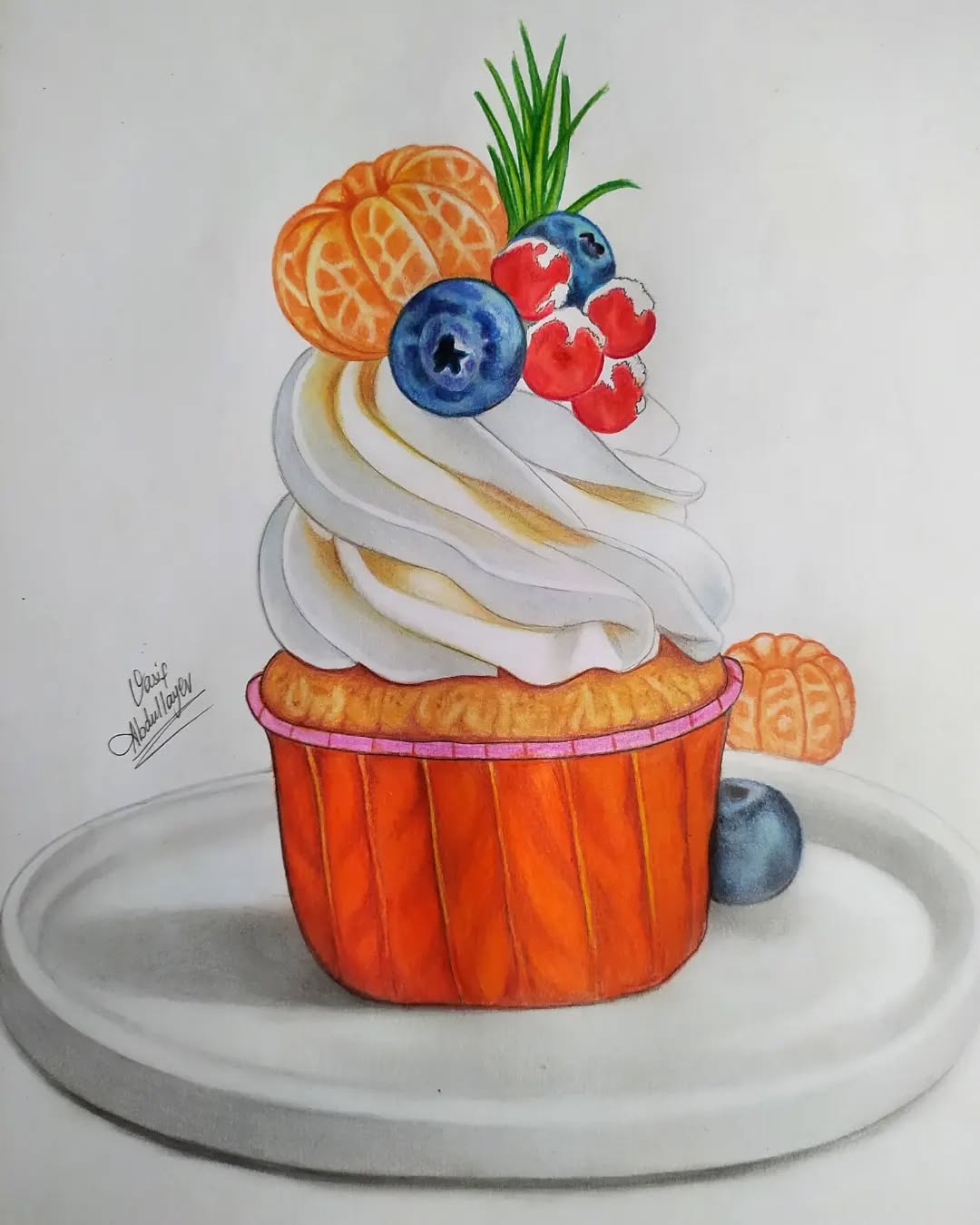
source @av_art99
Cupcakes are a deliciously fun subject to draw and allow you to focus on intricate details while still keeping things simple. Begin with a basic cupcake shape: a round base with a swirl of frosting on top. You can add your own touch by experimenting with different frosting styles, sprinkles, or toppings like cherries or candy. Cupcakes are also an excellent way to practice adding textures, such as the smoothness of frosting or the roughness of the cupcake’s paper wrapper. This simple drawing project will help you explore pattern, texture, and color, all while creating something adorable and whimsical.
10. Mountain Landscape

source @ray_loves_arts
A mountain landscape gives you a chance to practice depth, perspective, and the use of different drawing materials. Start by drawing the outline of mountain peaks, then use lines to create layers in the landscape to show distance and dimension. Add details like trees, rocks, and water to create a serene and realistic environment. This drawing will help you practice shading to create shadows and highlights, and by the end, you’ll understand how to make a two-dimensional drawing look three-dimensional.
11. Underwater Scene
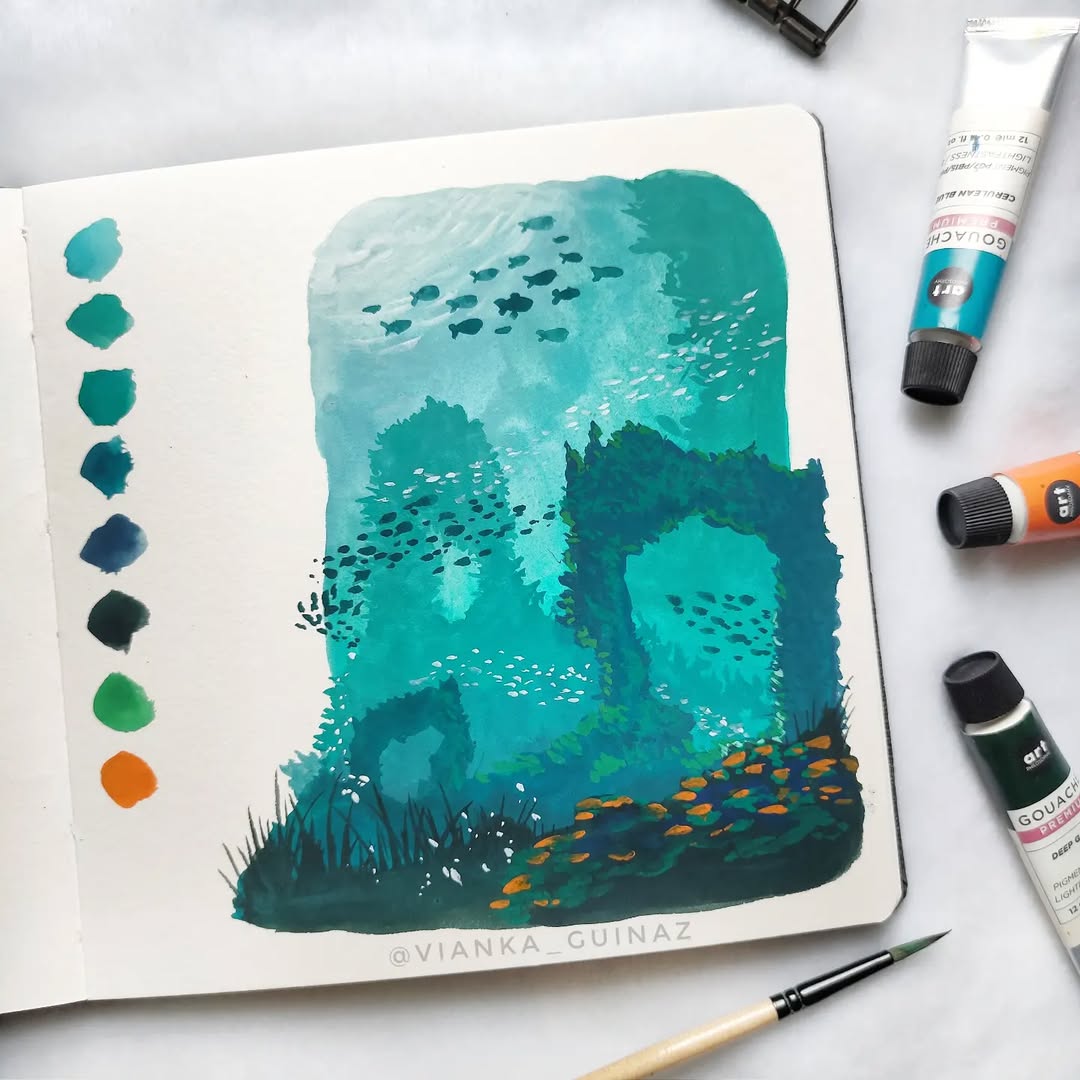
source @vianka_guinaz
Drawing underwater scenes is a fantastic way to learn about light and water. Start by sketching the basic elements of an underwater scene, such as fish, plants, and bubbles. The challenge is in creating the illusion of water, so practice using softer lines for underwater elements and incorporating transparency into your drawings. Shading is also important in this drawing, as it will help convey the depth and light filtering through the water. This scene will allow you to explore fluidity and texture while keeping things simple and enjoyable.
12. Simple Mandala Art
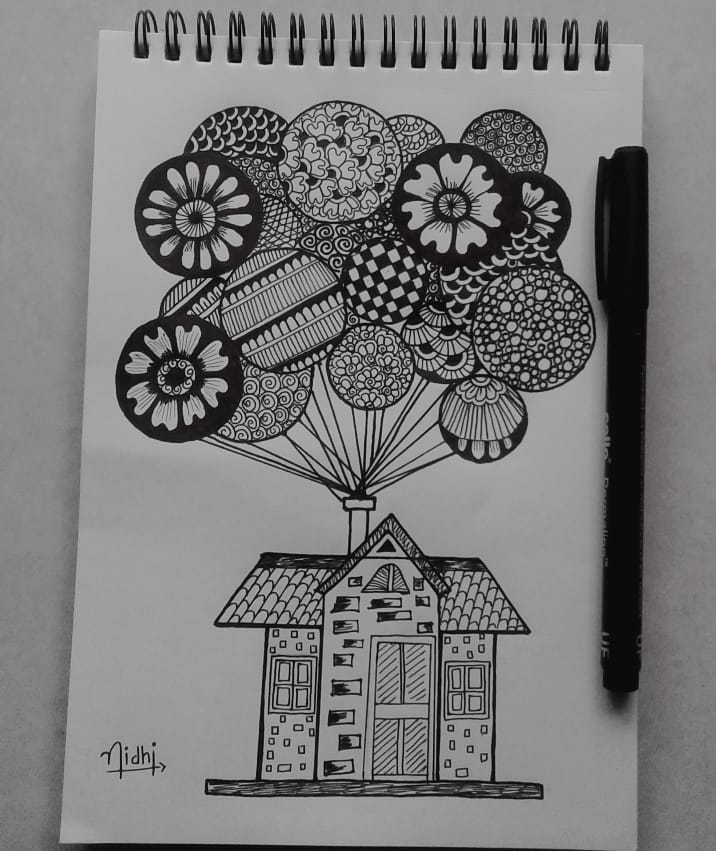
source @rare_art_by_nidhi
Mandalas are beautiful and meditative designs that consist of repetitive patterns and symmetrical shapes. Begin by drawing a small circle in the center, then expand outward with intricate patterns of lines, shapes, and colors. Mandalas are great for practicing symmetry and focus, as each new layer of the design must align perfectly with the others. While they may look complex, you can start with simple shapes and gradually add more detail as you become more comfortable. Mandalas are a perfect exercise for mindfulness and creativity.
13. Simple Cloud Drawing
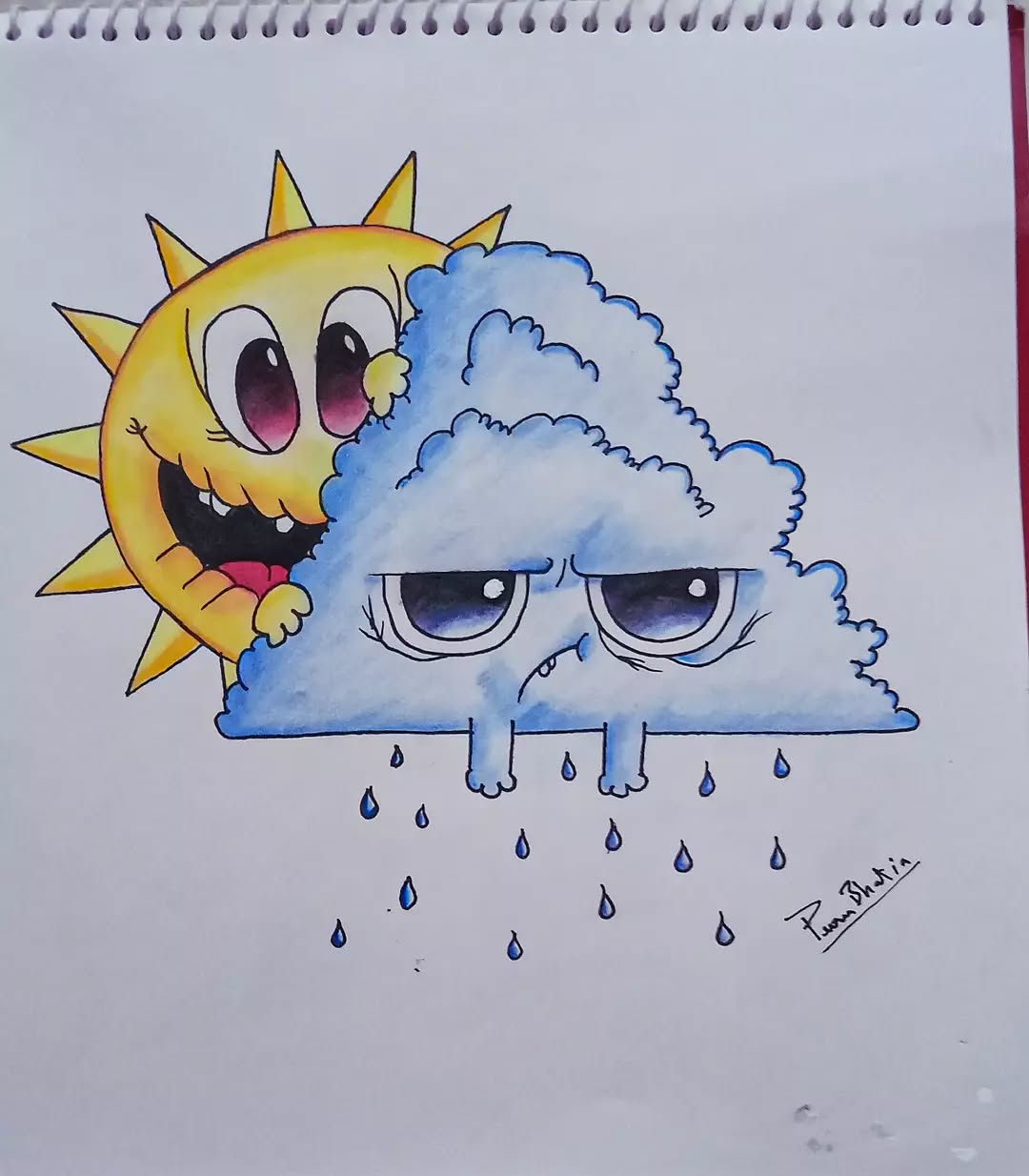
source @____flowing_with_the_flow__
Clouds are an excellent subject for beginners, as they allow you to practice light and shadow while also encouraging a loose, freehand drawing style. Start by sketching soft, fluffy shapes for the cloud outline. Clouds don’t need to be perfect, so feel free to vary their edges and form. Experiment with shading to create depth, using softer pencil strokes for a light and airy feel or darker strokes for a dramatic storm cloud effect. By practicing with clouds, you can learn how to use lightness and darkness to give life to your drawings, making it an easy yet rewarding exercise.
14. Cute Ice Cream Cone
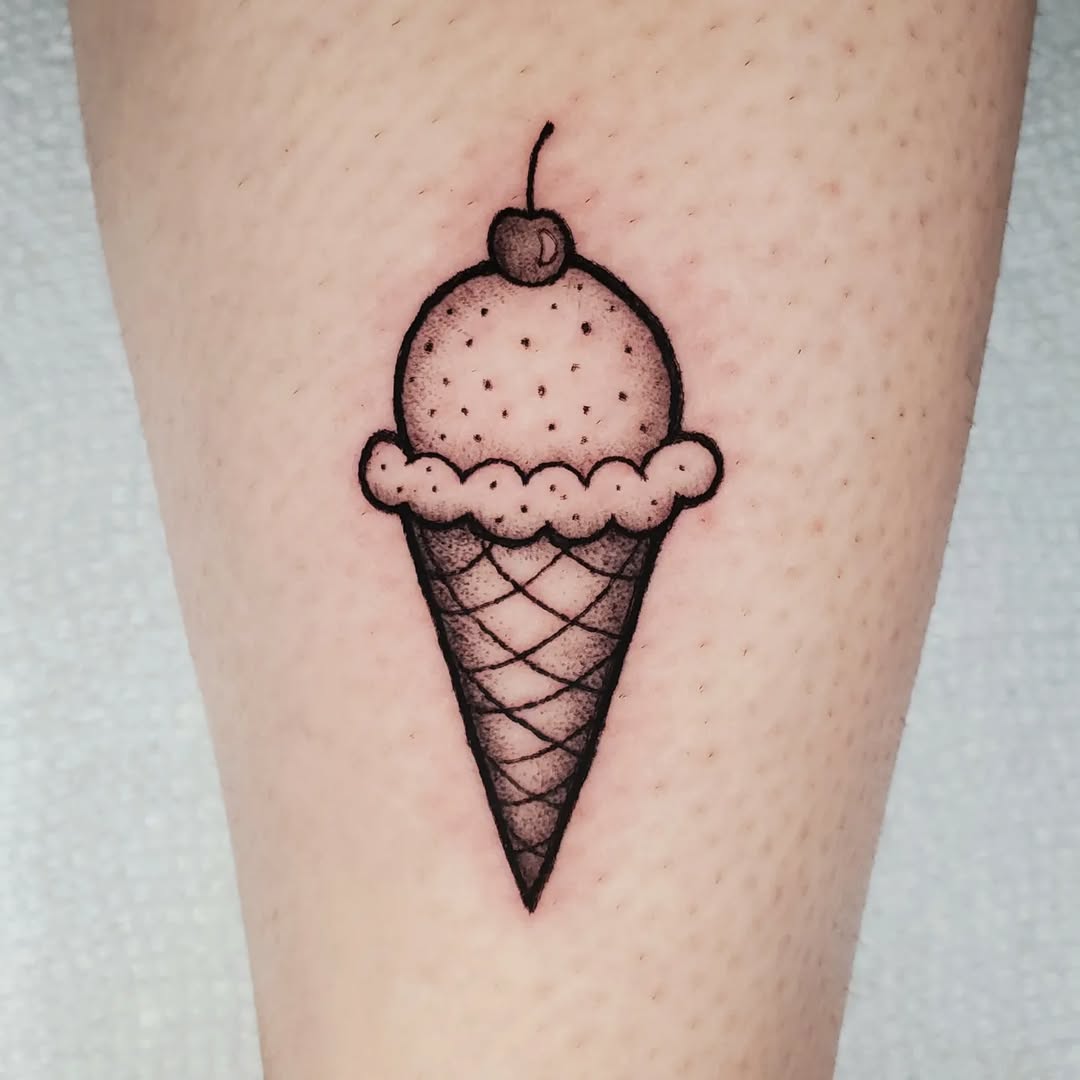
source @mikka_x_tattoo
Drawing an ice cream cone is a fun and colorful way to practice creating textures and adding details. Start with the classic cone shape, then top it with a scoop of ice cream. Add details like sprinkles, a cherry, or drips for extra flair. The soft, smooth texture of the ice cream contrasts beautifully with the criss-cross lines of the cone, giving you an opportunity to practice drawing different textures. This project also lets you experiment with colors, as ice cream cones are fun to decorate with vibrant hues. The simple form of the cone and ice cream makes it an approachable and enjoyable drawing subject.
15. Bird in Flight
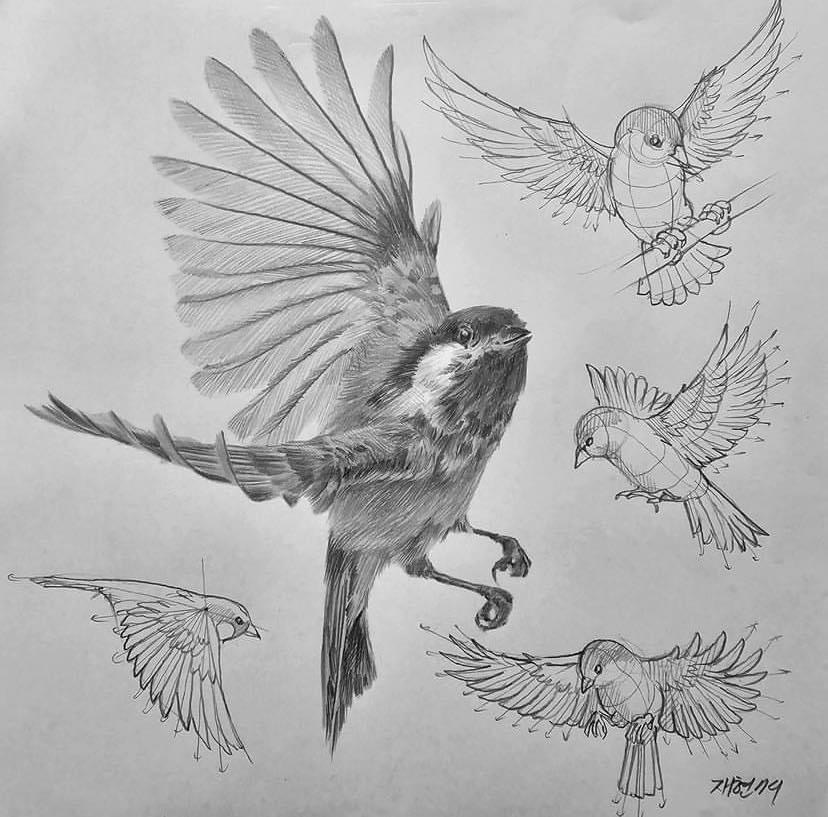
source @choosemarker
Drawing a bird in flight is a wonderful exercise in capturing movement and action. Begin by sketching the body of the bird and its wings spread wide. Focus on getting the proportions right, making the wings larger and more elongated for an elegant flight look. Don’t worry about adding too much detail at first; instead, focus on the posture and shape of the bird in motion. Add in feather details and shading later to give the bird depth and texture. This drawing will help you understand how to depict movement on paper, and the fluidity of the bird’s wings will encourage you to experiment with lines and angles.
16. Cup of Coffee with Steam
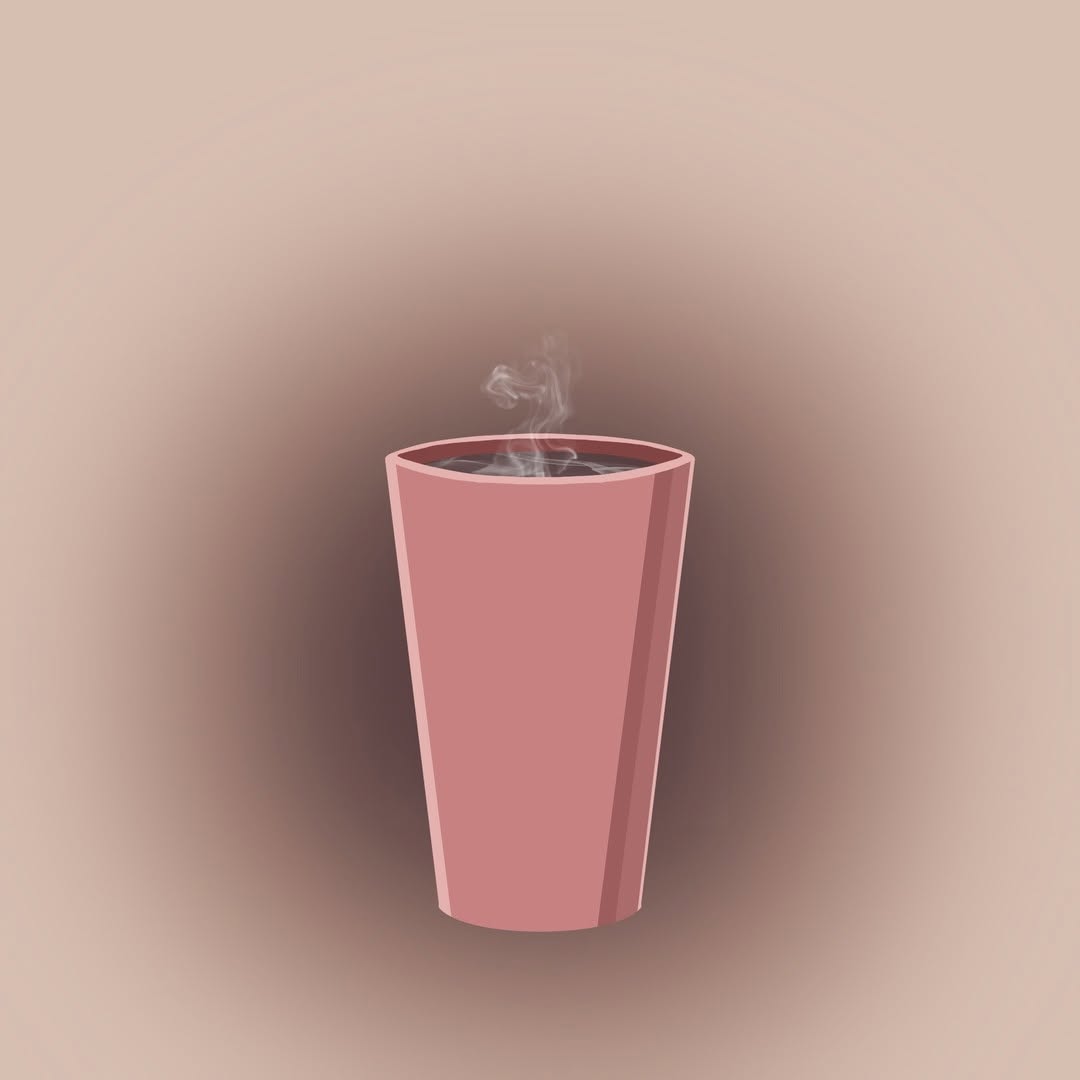
source @artilybycat
A cup of coffee with rising steam is a simple yet charming subject that allows you to practice drawing curves and delicate details. Start with a basic cup shape, paying attention to the proportions of the handle and base. Draw the steam rising from the cup with gentle, curving lines, keeping them light and airy to create a sense of movement. Add shading to the cup to give it depth and dimension, making the scene look more realistic. This drawing will not only help you with perspective and line work but will also give you a chance to explore the artistic appeal of everyday objects.
17. Simple House Drawing
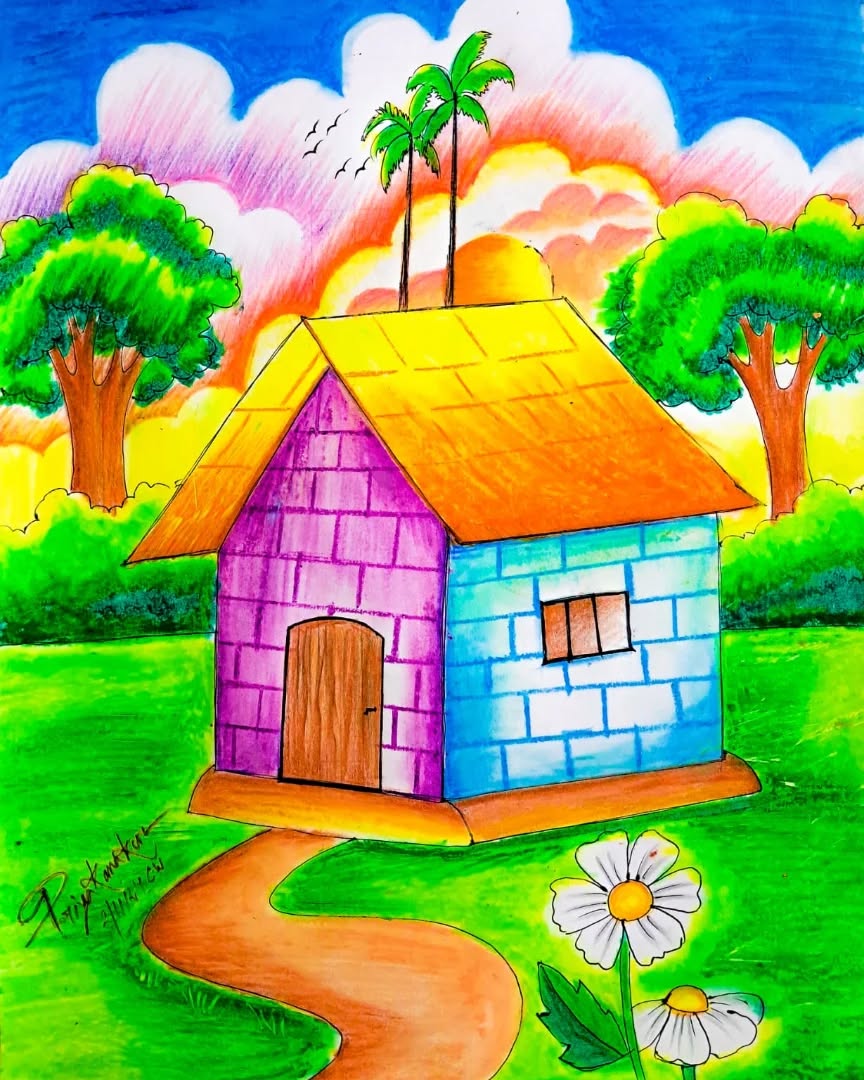
source @karmakar2254
A simple house is a fantastic beginner project that teaches basic shapes and perspective. Start with a square or rectangular base for the house, then add a triangular roof. Focus on getting the proportions right, with the roof being slightly larger than the base. Add windows, doors, and maybe a chimney for added detail. This drawing is a great exercise in perspective, as you can practice adding depth to a 2D object. Once you have the basic structure, you can even experiment with textures, such as the appearance of bricks or wood siding, using simple lines and shading techniques.
18. Cute Penguin Sketch
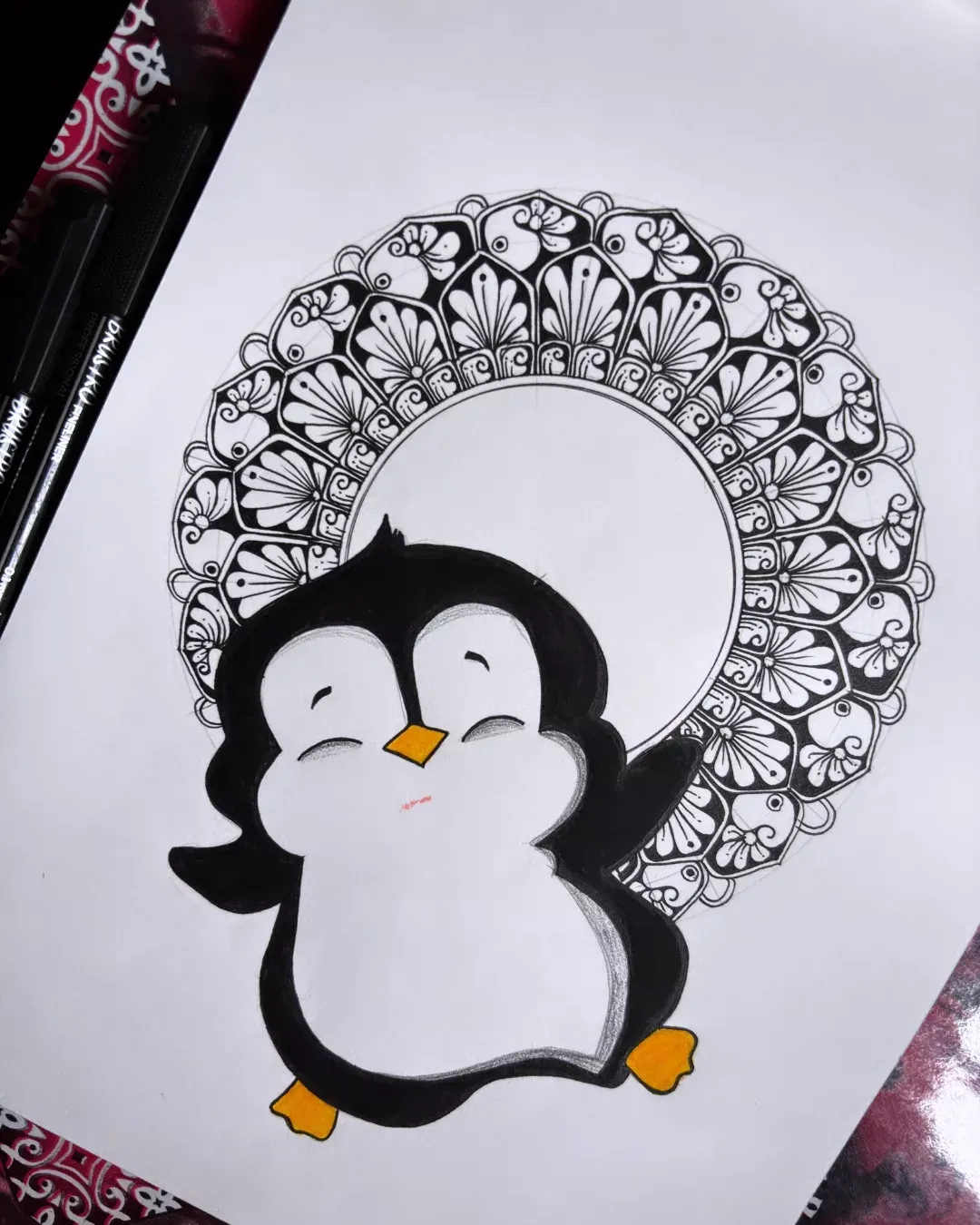
source @sandhya_art_32
Penguins are another adorable and easy-to-draw subject that can help beginners develop their drawing skills. Start with an oval shape for the body, and add a smaller circle for the head. Then, sketch out the flippers and feet, keeping the lines smooth and simple. Don’t worry about making the penguin look exactly like a real one; instead, focus on creating a cartoonish version with exaggerated features like large eyes or a chubby body. This sketch is perfect for practicing proportion, symmetry, and adding small details that bring the character to life.
19. Abstract Plant Design
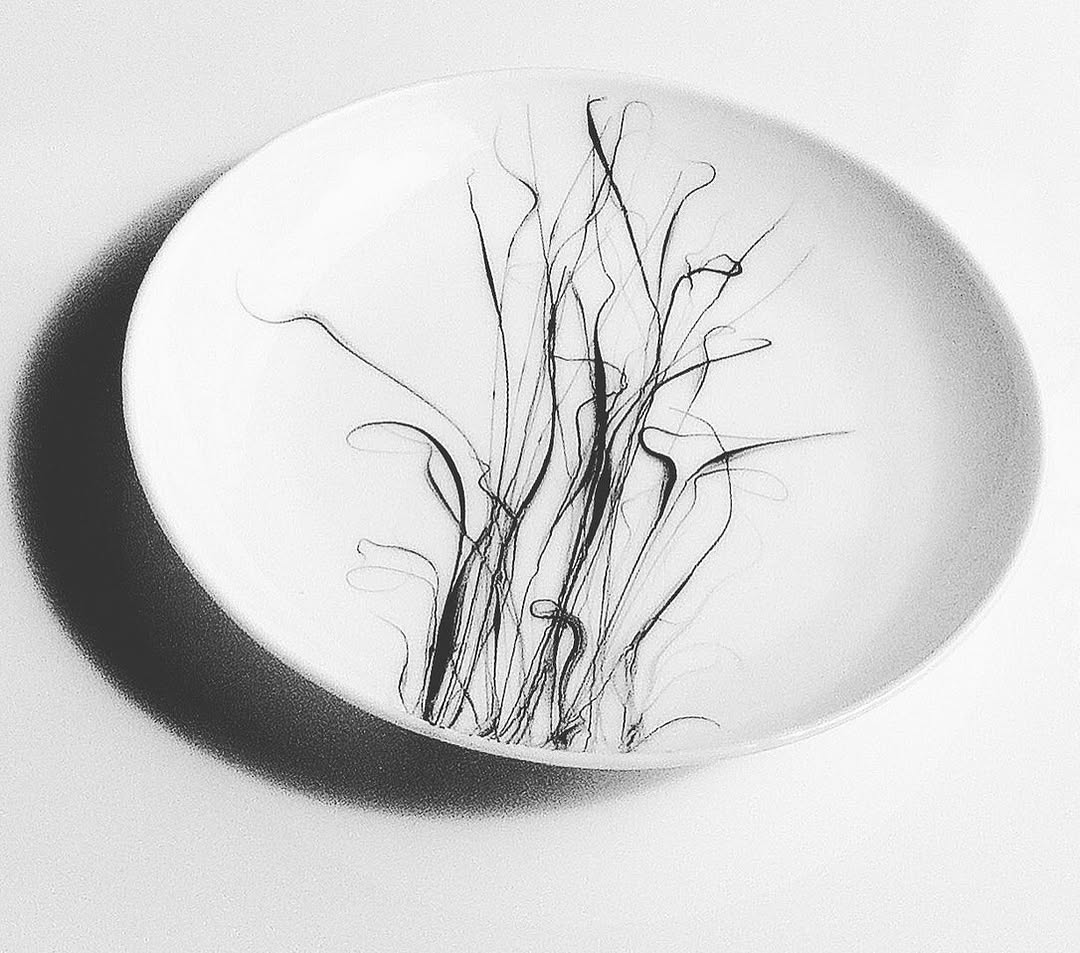
source @miriadmoni
Plants offer an opportunity to explore organic shapes and natural forms. Begin with simple elements like leaves, stems, or vines. Draw them using clean, smooth lines, and focus on their natural growth patterns. Once you’re comfortable with basic plant shapes, experiment with layering and creating more intricate designs. You can also try drawing succulents, cacti, or simple flower arrangements. The beauty of plant drawings is that there’s no right or wrong way to do them; each plant has its own personality, so feel free to explore and adapt the design as you go.
20. Simple Fish Drawing
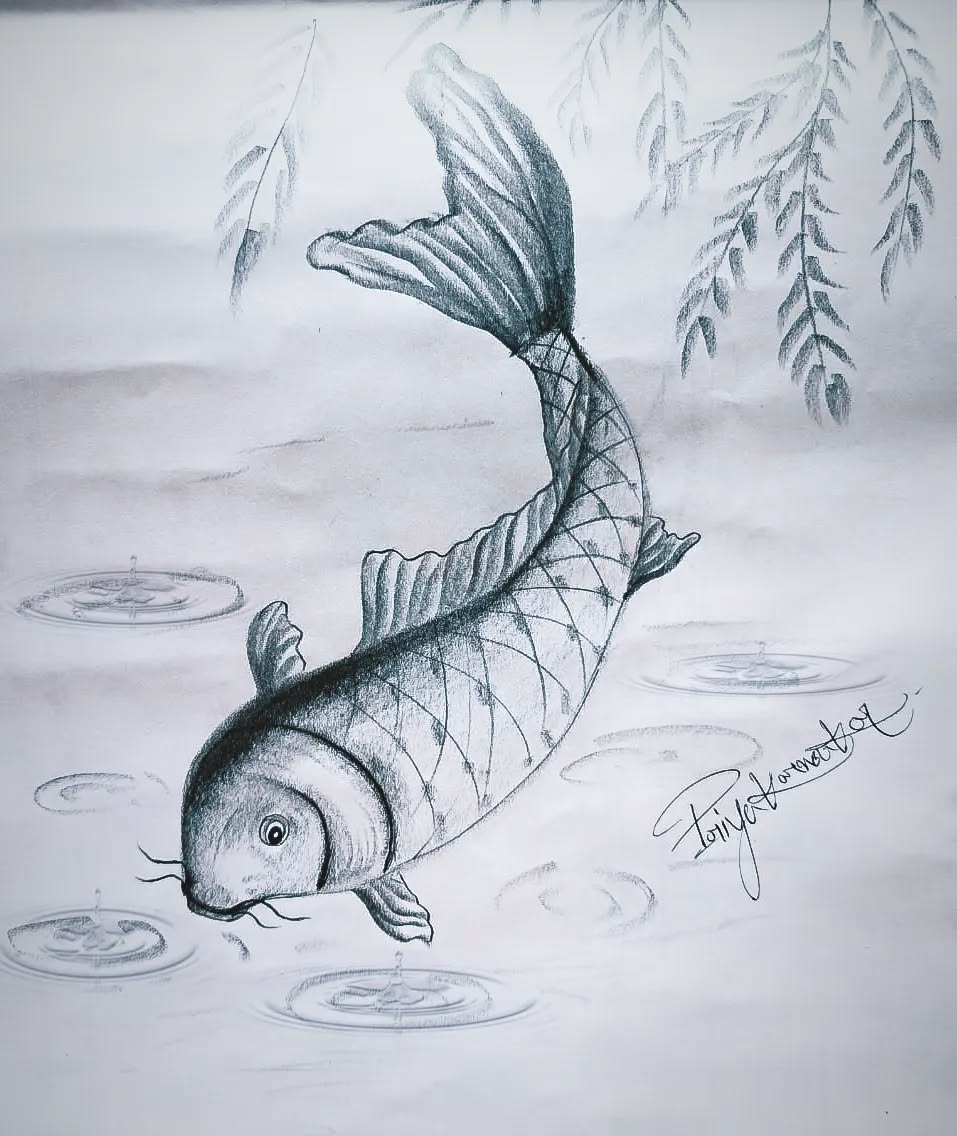
source @karmakar2254
Fish are an enjoyable subject for beginners because they come in a variety of shapes and sizes. Start with a basic oval shape for the body, then add a triangular fin at the back and a smaller one near the front. Add the tail fin and some simple lines to indicate the fish’s scales. As you become more comfortable, you can experiment with different types of fish, such as goldfish, trout, or tropical fish, each with their own unique shape and features. This drawing is a great way to practice curves and symmetry, as well as the use of lines to create texture and movement.
21. Whimsical Tree Drawing
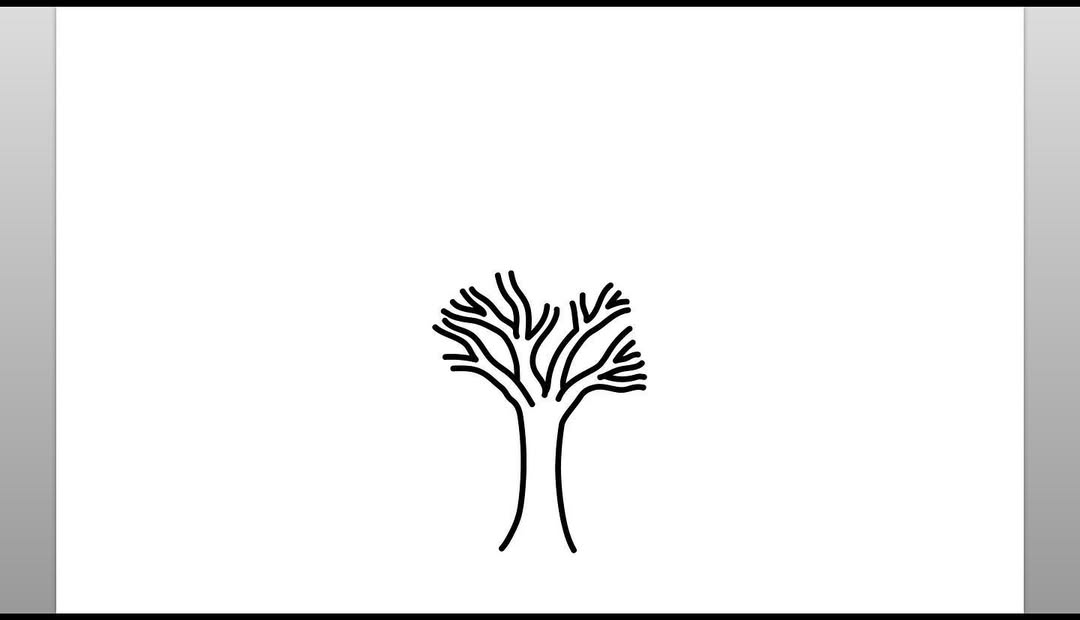
source @easykiddrawings
A whimsical tree drawing is a playful and creative way to end your journey into beginner drawings. Start with a simple trunk and branches, keeping the lines organic and flowing. Then, add leaves or fruit, focusing on varying their size and placement. You can create a tree with a rounded canopy for a softer look, or give it an asymmetrical shape for a more whimsical, stylized feel. This drawing is about letting your creativity take the lead. Try experimenting with different textures for the bark, and don’t be afraid to add fantastical elements like hearts or stars as the leaves. This drawing is an excellent exercise for letting go of perfection and enjoying the process of creation.



